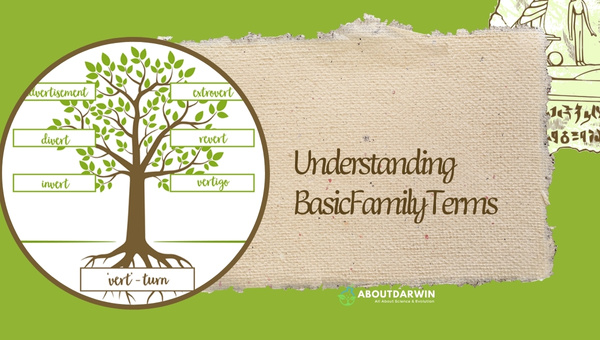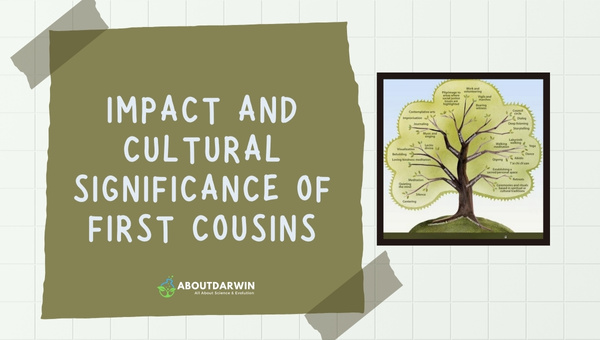Physical Address
304 North Cardinal St.
Dorchester Center, MA 02124
The concept of first cousins is often intertwined with cherished memories of family gatherings and childhood adventures. These individuals, the children of your parents’ siblings, represent more than just a connection on a family tree; they embody shared experiences and familial bonds that can shape our identities.
As we explore the significance of first cousins, their roles in our lives become clearer, revealing how these relationships extend beyond mere titles to influence our social and genetic landscapes.
The intertwining of family ties and shared heritage makes understanding first cousins a fascinating journey into our lineage.
Family terminology encompasses a wide range of terms that describe the various relationships within a family unit. Understanding these terms is essential for effective communication about familial connections.

Families can be categorized into immediate (or nuclear) families, which include parents and their children, and extended families, which encompass additional relatives such as grandparents, aunts, uncles, and cousins.
A first cousin is defined as the child of a person’s aunt or uncle. This relationship occurs when two individuals share a set of grandparents but do not share parents, making them part of the same generation in the family tree.
In genealogical terms, first cousins are typically referred to as individuals who have two grandparents in common, with their parents being siblings.
First cousins are individuals who share a set of grandparents, making them the children of a person’s aunts or uncles.
This relationship places them two generations away from their shared grandparents, which fosters a closer familial bond compared to more distant relatives like second or third cousins.
Understanding cousin relationships can become complex with the concepts of degrees and removals:
Cousins can be categorized further into types based on their familial connections:
First cousins play an essential role in family dynamics, often participating in family gatherings and maintaining close relationships throughout life. Understanding the nuances of cousin relationships enhances our appreciation for family connections.
First cousins share a significant genetic connection, as they are the children of siblings (aunts and uncles).
This relationship means that first cousins typically share about 12.5% of their DNA, although this can vary between 7% and 13.8% depending on the specific genetic inheritance from their common grandparents.
The genetic connection between first cousins is substantial enough that it can have implications for health and genetics.
For instance, studies have shown that children born to first cousins may have a higher risk of genetic disorders compared to those born to unrelated parents, although this risk decreases significantly when considering second cousins or more distant relatives.
Everyone gets 50% of their DNA from each parent; therefore, logically speaking, you’d share 25% (half of 50%) with any full-blooded sibling (brother or sister).
This percentage might seem measly in context, but it’s quite significant in terms of genetic overlap! It’s this biological connection that makes first cousins potential organ or tissue match donors for transplant cases.
Also Read: What Is A Second Cousin? Discover Genetic Connections
First cousins play an essential role in our everyday lives. Tied to us by blood and shared experiences, the bond between first cousins often blends the love of immediate family with the camaraderie of good friends.

Apart from our individual worlds, first cousins have held significant places in history and culture, having displayed their importance in societal development and evolution through various roles.
Historically, relationships between first cousins had been instrumental in forging political alliances, uniting kingdoms, and even maintaining “pure” bloodlines among royalty. Let’s delve into some instances where this connection played pivotal roles:
In today’s world, though fraught with ethical perspectives, many laws deal with relations between first cousins:
Explaining how first cousins impact us on personal and societal levels helps substantiate their importance within familial structures across time.
They have not just made significant contributions to family trees but have also shaped historical narratives in meaningful ways, all the while continuing to wrestle with complexities of law pointing towards their eternal significance in human lives.
Also Read: Unraveling the Mystery: What is a Suffix in a Name?
Your siblings’ children and children from both of your parent’s siblings are typically considered as your first cousins.
No, your parents’ first cousins are actually referred to as your ‘first cousins once removed.’
While you and your first cousins share grandparents, you share great-grandparents with second cousins.
The legality of marrying a first cousin varies from place to place, with some states and countries allowing it while others prohibit it.
On average, you share about 12.5% of your DNA with a first cousin, emphasizing the often strong familial connection.
Exploring the connections within a family tree reveals the significance of relationships, such as those with a first cousin. These familial ties often provide a sense of belonging and shared history, enriching our understanding of identity.
First cousins typically share a grandparent, making them integral to family dynamics. Recognizing these connections can foster stronger bonds and appreciation for one’s heritage, ultimately enhancing the family narrative.
Embracing these relationships helps individuals navigate their lineage and celebrate the unique stories woven through generations.